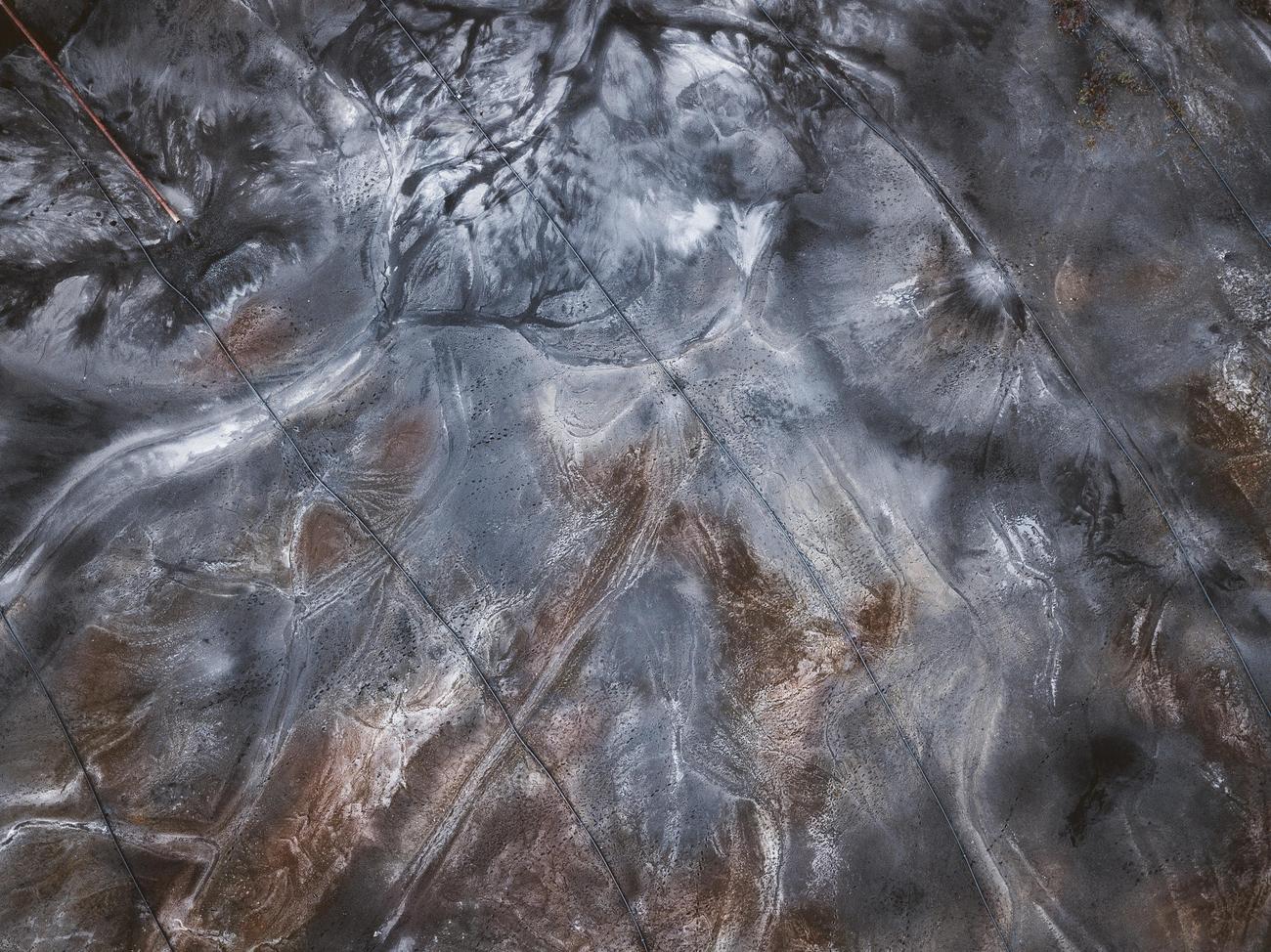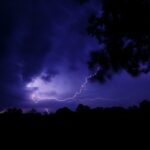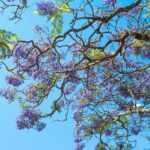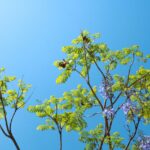Are you ready to unlock the secrets of one of the world’s most intriguing and captivating ecosystems? Look no further than the chaparral biome, an enchanting and enigmatic habitat that will leave you awestruck. In this article, titled “Discover Fascinating Chaparral Biome Facts,” we will delve into the unique characteristics of the chaparral biome, exploring its diverse array of plants and animals that have adapted to thrive in this extraordinary environment. Get ready to embark on a journey of discovery as we unravel the mysteries of the chaparral and reveal its vital role in the larger ecosystem.
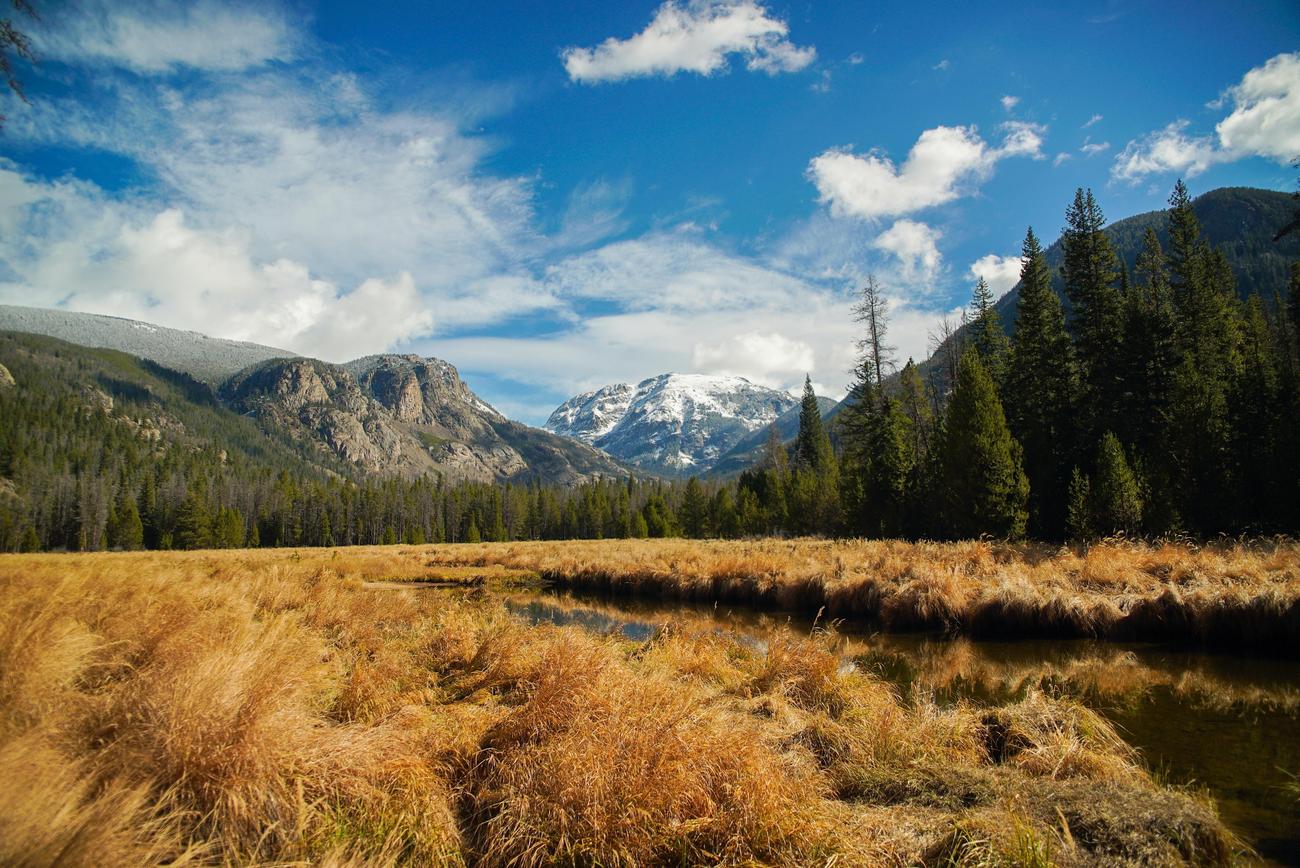
Interesting Facts About the Chaparral Biome
Sizzling Summers and the Fire-Resistant Flora
When it comes to intriguing biomes on our diverse planet, the chaparral stands out as one of nature’s marvels. This unique biome can be found in parts of California, Oregon, South Africa, and Australia, captivating the hearts of those who explore its wonders. Picture a landscape where forests and grasslands coexist, creating a mesmerizing blend of green hues and earthy tones.
Did you know?
In the chaparral biome, the summer season can be scorching, with temperatures skyrocketing to an average of 100°F. These arid conditions can persist for up to five long months, making the chaparral a true land of extremes. With such intense heat and dryness, it’s no wonder wildfires have become an integral part of this biome’s story.
So, what keeps the chaparral going despite the fiery danger?
The remarkable flora of the chaparral biome has evolved in brilliant ways to cope with the flames. Many shrubs have developed fire-resistant burls at the base of their stems. Think of these burls as nature’s cheat codes, allowing the plants to regenerate swiftly after a fire sweeps through. It’s awe-inspiring to witness nature’s resilience in action!
“In the face of adversity, the chaparral biome’s flora has mastered the art of survival, rising like phoenixes from the ashes.”
Cowboy Chaps and the Grizzly Bear Chronicles
Now, let’s dive into some cultural connections and historical tales that intertwine with the fascinating chaparral biome. Have you ever wondered how the iconic cowboy chaps got their name? Well, it’s a nod to the chaparral itself, as these protective leather leg coverings were created for wranglers traversing this rugged terrain. So next time you see a cowboy striding with confidence, remember the origins of their trusty attire.
Delving into history, did you know?
The chaparral biome, particularly the California chaparral, was once home to a formidable apex predator: the California Grizzly Bear. However, saddened hearts mark its tale, as the last sighting of this majestic creature was in 1924. While the grizzly bear’s chapter has closed, the chaparral biome continues to bear the weight of its memories. Its story is a testament to the ever-changing nature of ecosystems and the importance of preserving biodiversity.
“From the chaps on a cowboy’s legs to the vanished grizzly bear, the chaparral offers glimpses into both nature’s influence on culture and the fleeting beauty of our wildlife.”
Where Land Meets Sea: the Chaparral’s Birth
As we explore the intriguing chaparral biome, let’s uncover how it came to be. Picture a fascinating merger of cool ocean waters with a hot, landmass kiss. This magical collaboration creates the perfect setting for the chaparral to flourish, making it a unique and enchanting biome to behold.
Here’s a cool fact:
Chaparral biomes are born when cool ocean currents mingle with high-temperature coastal landmasses. This extraordinary union leaves us with majestic landscapes where greenery thrives against the backdrop of cerulean waves. The chaparral is an ode to the intricate relationships between land and sea, a symphony of life that captivates the senses.
“In the chaparral biome, where ocean whispers meet fiery earth, a delicate balance emerges, giving rise to a mesmerizing dance of life.”
A Fiery Symphony: the Intertwining of Summer and Flames
As the relentless summer sun blazes over the chaparral biome, a vital yet fiery chapter unfolds. The combination of scorching temperatures, arid conditions, and abundant vegetation sets the stage for the emergence of wildfires. With the tinderbox-like environment, even the smallest spark can ignite a symphony of flames.
But why does the chaparral seem so tinder-dry?
The chaparral’s lengthy dry summer season provides the perfect recipe for these majestic yet dangerous infernos. For months on end, the biome becomes increasingly susceptible to fires, transforming the landscape into a living testament to the power of nature’s forces. It is a reminder that life often finds a way, even amid chaos and destruction.
“Amidst the heat and flames, the chaparral biome’s resilience shines through, a testament to the delicate balance of nature’s elements.”
Takeaways:
- The chaparral biome, found in California, Oregon, South Africa, and Australia, is a remarkable blend of forests and grassland, creating a visually stunning landscape.
- With scorching summer temperatures reaching an average of 100°F, the chaparral biome endures a dry season that can last up to five months.
- The flora of the chaparral biome has developed fire-resistant burls, enabling them to regenerate swiftly after fires.
- Cowboy chaps get their name from the chaparral biome, where they were designed for navigating its rugged terrain.
- The California Grizzly Bear, once the apex predator of the chaparral biome, was last sighted in 1924, highlighting the changing dynamics of ecosystems.
- The creation of the chaparral biome occurs when cool ocean currents meet high-temperature coastal landmasses, resulting in a unique and enchanting environment.
- In the chaparral biome, the dry summer season makes it highly susceptible to wildfires, showcasing the power and resilience of nature.
“From its fiery summers to its resilient flora, the chaparral biome beckons us to appreciate the delicate interconnectedness of our planet’s ecosystems.”
The fascinating world of the chaparral biome holds many secrets waiting to be uncovered. Have you ever wondered about the weather conditions that characterize this unique biome? Click here to discover an in-depth exploration of the weather conditions in the chaparral biome. Additionally, animals dwelling in the chaparral biome have developed an advantageous adaptation – a varied diet. Find out how this adaptation benefits them by clicking this link. If you’re curious about the diverse plant life found in the chaparral biome, click here to delve into the captivating world of chaparral biome plants. Furthermore, uncover what kind of vegetation you can expect to find in this enchanting biome by clicking on this link. Don’t miss out on learning about the amazing animals that inhabit the chaparral biome; click here to find out more about the intriguing chaparral biome animals. Explore these links and embark on a thrilling journey through the wonders of the chaparral biome.
describe the weather conditions that characterize the chaparral biome
how is a varied diet an advantageous adaptation for animals dwelling in the chaparral biome
what kind of vegetation would you most likely expect to find in the chaparral biome
describe the weather conditions that characterize the chaparral biome
Chaparral Biome Characteristics
When it comes to unique and captivating biomes, the chaparral is undoubtedly one that stands out. Found in California, Oregon, South Africa, and Australia, this biome offers a fascinating blend of forests and grasslands, creating a visually stunning landscape that never fails to captivate its visitors. But what are the key characteristics that make the chaparral biome so mesmerizing? Let’s delve into its distinct features and uncover the secrets that lie within.
A Summer of Dryness
In the chaparral biome, the summer season brings an intense dryness that can last for up to five months. With scorching temperatures and minimal rainfall, this arid climate sets the stage for a unique ecosystem to thrive. The plants and animals that call the chaparral home have adapted to withstand these challenging conditions, showcasing the resilience and ingenuity of nature.
“The chaparral biome’s summer season is marked by an arid landscape, where heat and dryness reign supreme. How do its inhabitants cope with such harsh conditions?”
A Fiery Dance of Destruction and Rebirth
Perhaps one of the most intriguing aspects of the chaparral biome is its relationship with wildfires. While these devastating occurrences may seem like a catastrophe, they play a vital role in the growth and regeneration of this ecosystem. The flora of the chaparral has adapted fascinating strategies to survive and even thrive in the face of fire. Evergreen shrubs and small trees possess fire-resistant burls, structures that allow them to quickly regenerate after a blaze engulfs the landscape.
“How do the plants of the chaparral biome embrace the destructive power of fire and use it to their advantage?”
A Haven for Unique Wildlife
The chaparral biome is not only a haven for extraordinary vegetation but also a sanctuary for a diverse array of animal species. Coyotes, lizards, rabbits, and birds are just a few of the fascinating creatures that call this biome their home. These resilient animals have developed the ability to adapt to the harsh conditions, showcasing their resourcefulness in navigating the challenges of the chaparral environment.
“What remarkable adaptations have the animal residents of the chaparral biome evolved to thrive in their fiery and unpredictable home?”
An Intersection of Ecosystems
The chaparral biome also intersects with other arid biomes, such as deserts. This connection creates a unique dynamic where different ecosystems come together, resulting in a rich tapestry of biodiversity. This blending of distinct biomes contributes to the chaparral’s captivating allure, as it embraces and showcases the diversity of life within a relatively small geographical area.
“How does the chaparral biome serve as a meeting point for different ecosystems, fostering a remarkable diversity of life?”
Nature’s Masterpiece Along the Coastline
Finally, the chaparral biome’s location along coastlines adds an extra layer of fascination to its characteristics. The cool ocean currents that meet the high-temperature coastal landmasses create the ideal conditions for this unique biome to thrive. It’s a testament to the power and resilience of nature, shaping an extraordinary landscape that enchants and mystifies all who set foot within its boundaries.
“What makes the chaparral biome along coastlines a masterpiece crafted by the forces of nature?”
In conclusion, the chaparral biome’s remarkable characteristics make it one of the most intriguing and captivating ecosystems in the world. From its dry summers to the interplay between fire and regeneration, this biome showcases the ingenuity of its flora and fauna. With its unique intersection of ecosystems and coastal allure, the chaparral biome beckons us to explore its mysteries and appreciate the wonders of our natural world.
Plants and Animals in the Chaparral
The chaparral biome, found in regions like California, the Mediterranean, Africa, South America, and Australia, is a unique and captivating ecosystem that is home to a diverse range of plants and animals. In this article, we will delve into the fascinating flora and fauna that thrive in this mesmerizing biome.
Flora of the Chaparral
The plants found in the chaparral biome have developed remarkable adaptations to survive in its challenging conditions. One of these adaptations is the presence of fire-resistant burls, which allow them to regenerate quickly after wildfires. These burls act as protective shields, enabling the plants to sprout new shoots from their protected underground tissues. This incredible resilience of the flora is a true testament to nature’s power.
“The chaparral’s flora showcases both resilience and remarkable adaptations, allowing it to thrive amidst wildfires and challenging climatic conditions.”
Among the notable plant species in the chaparral biome are the scrub oaks, sage, and yucca. These plants have adapted to the hot and dry summers as well as the mild and wet winters that characterize the chaparral. Scrub oaks, with their leathery leaves and deep roots, are well-equipped to withstand the long dry season, while sage and yucca have developed water-conserving mechanisms to thrive in this challenging environment.
“From the sturdy scrub oaks to the water-savvy sage and yucca, the plants in the chaparral have evolved remarkable strategies to flourish in its harsh climate.”
Fauna of the Chaparral
Just as the flora has adapted to the chaparral’s unique conditions, the animals that call this biome home have also developed fascinating survival mechanisms. One such animal is the coyote, known for its adaptability and resourcefulness. Coyotes are skilled hunters and scavengers, making the most of the diverse food sources available in the chaparral. Their ability to thrive in this biome is a testament to their remarkable adaptability.
“The chaparral buzzes with the lively presence of coyotes, showcasing their remarkable adaptability and resourcefulness in this challenging biome.”
The chaparral biome is also home to a variety of lizards, such as the western fence lizard and the common side-blotched lizard. These reptiles have keen senses and remarkable camouflage capabilities, allowing them to blend seamlessly into their surroundings. Their ability to quickly scuttle across the rugged terrain of the chaparral highlights their agility and survival skills.
“Watch closely, and you might catch a glimpse of the Western fence lizard or the common side-blotched lizard, experts at blending into the chaparral’s intricate ecosystem.”
Rabbits, with their ability to breed rapidly and their exceptional agility, are another notable presence in the chaparral biome. These small mammals navigate the dense shrubs and rugged landscape with ease, utilizing their speed to evade predators. Their presence adds a vibrant touch to the chaparral’s ecosystem.
“The chaparral comes alive with the playful antics of rabbits, their nimble movements and rapid breeding helping them thrive in this unique biome.”
Birds add a symphony of sounds to the chaparral, from the melodic songs of sparrows to the impressive aerobatics of the California towhee. These avian inhabitants play a crucial role in the biome, contributing to pollination and seed dispersal. The rich biodiversity of birds inhabiting the chaparral biome showcases the interdependence and intricate balance of this ecosystem.
“Listen to the enchanting melodies of sparrows and witness the breathtaking aerial displays of the California towhee, as the chaparral’s avian inhabitants actively contribute to the biome’s vitality.”
In the chaparral biome, every plant and animal has a story to tell. Their remarkable adaptations, resilience, and interconnections create a mesmerizing tapestry of life in this shrubland ecosystem. Exploring and unraveling the secrets of the chaparral’s plants and animals opens our eyes to the wonders and complexities of nature.
So, the next time you venture into the chaparral biome, take a moment to appreciate the tenacity of the plants and the ingenuity of the animals that call it home. It’s a thriving ecosystem, brimming with life and captivating stories waiting to be heard.
“Step into the chaparral, and you’ll witness a captivating world where plants and animals intertwine to create a resilient and diverse ecosystem.”
Interesting Facts About the Chaparral Biome
[youtube v=”hUOep1kGBIs”]
The Mediterranean Climate and Plant Life
The Chaparral Biome is shaped by the Mediterranean climate, which is characterized by hot, dry summers and wet winters. This unique climate allows for the growth of plants that are well-adapted to survive in these conditions. In the Chaparral Biome, you can find plants with evergreen leaves that can tolerate summer drought. These plants play a vital role in the ecosystem of the Chaparral Biome.
“The Mediterranean climate shapes the Chaparral Biome and is characterized by hot, dry summers and wet winters.”
The Chaparral Biome in California
In California, the Chaparral Biome covers around 5% of the state. It is mainly connected to the Mediterranean shrubland. The name “Chaparral” is derived from the Spanish word “caparro,” which means scrub oak. This name reflects the abundance of scrub oak in this biome.
“In California, the Chaparral Biome covers around 5% of the state and is known for its abundance of scrub oak.”
Unpredictable Fires and Mature Plants
One of the common characteristics of the Chaparral Biome is the presence of infrequent fires. In its natural state, the interval between fires can range from 10 to 100 years or more. The mature chaparral plants, with their highly flammable characteristics, play an essential role in the ecosystem. They are tolerant to drought and have small, hard leaves that do not drop, even during dry periods.
“The Chaparral Biome is prone to infrequent fires, and mature chaparral plants are highly flammable and tolerant to drought.”
Plant Diversity and Similar Biomes
The Chaparral Biome occupies approximately 20% of the plant diversity in the world. It is not only found in California but also in other areas of the world, such as central Chile, the Mediterranean Basin, western and southern Australia, and the South African Cape region. These regions share similar plants and characteristics with the Chaparral Biome.
“The Chaparral Biome is rich in plant diversity and can be found in various regions around the world.”
The Chaparral Biome in California
In California, the Chaparral Biome is dominated by several plant species, including corkus agrifolia, coastal sage brush, blue oak, canyon live oak, sagebrush, and scrub oak. These plants have adapted to survive in the challenging conditions of the Chaparral Biome, including fire-resistant burls that allow for quick regeneration after wildfires.
“The Chaparral Biome in California is dominated by diverse plant species that have adapted to survive in its unique conditions, including fire-resistant burls for regeneration.”
By highlighting the Mediterranean climate, plant life, the Chaparral Biome in California, unpredictable fires, plant diversity, and specific plant species, this article provides a comprehensive understanding of the Chaparral Biome.

FAQ
Question 1:
Where is the chaparral biome found?
Answer 1:
The chaparral biome is found in California, Oregon, South Africa, and Australia.
Question 2:
How would you describe the characteristics of the chaparral biome?
Answer 2:
The chaparral biome is characterized by both forests and grasslands. It has hot, dry summers that can last up to five months, and mild, wet winters.
Question 3:
Why is the chaparral biome prone to wildfires?
Answer 3:
The dry conditions of the chaparral biome make it prone to wildfires, especially during the summer season when it is very dry.
Question 4:
What kind of vegetation can be found in the chaparral biome?
Answer 4:
The vegetation in the chaparral biome consists of evergreen shrubs and small trees. Some common plants include scrub oaks, sage, and yucca.
Question 5:
What are some animal species found in the chaparral biome?
Answer 5:
The chaparral biome is home to a variety of animal species, including coyotes, lizards, rabbits, and birds.
- Sept 31 Myth: Unveiling Calendar Secrets - March 18, 2025
- How Long & Till December 18, 2025: Accurate Countdown Guide - March 18, 2025
- Discover Japanese Artists: A Complete History - March 18, 2025
